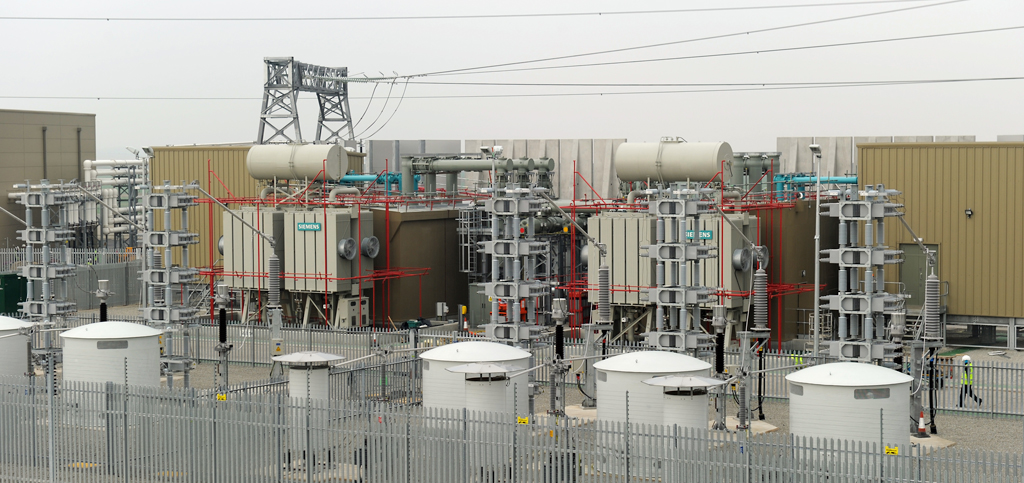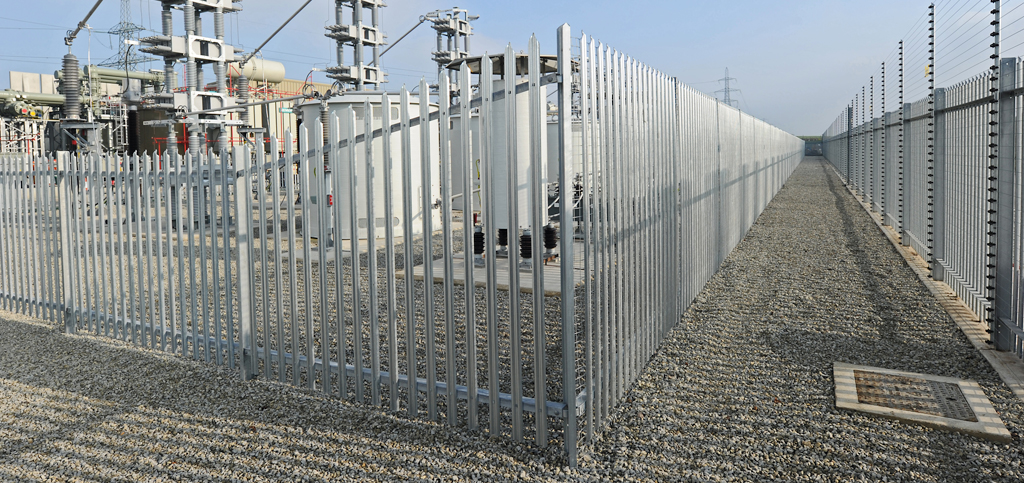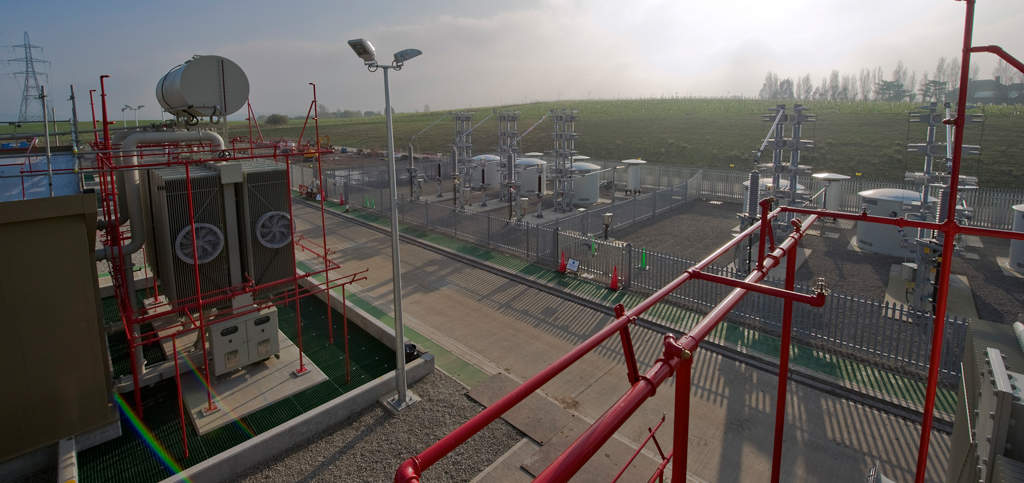

Location
Cleve Hill substation is situated near the village of Graveney, around one kilometre inland from the north Kent coast. We built the substation next to the Canterbury-Kemsley 400kV overhead power line on the north side of Cleve Hill, close to existing buildings at Cleve Farm. It was designed to blend into the hillside.
Design
The substation was designed by RMJM, a world-renowned firm of architects. It was developed around the concept of a viewing point perpendicular to the substation and almost a kilometre away on the Saxon Shore Way. The substation’s main architectural feature is the North Wall, which is 10m tall and made up of a series of concrete panels and fins.

Construction
The main earthworks operation, carried out in 2009, involved creating a plateau on the sloping hillside to enable us to build the substation’s foundations; 150,000m3 of excavated material (earth and rocks) was used to form screening mounds to reduce the substation’s visual impact. 10,000 trees and shrubs were planted on the mounds.
A 400kV compound was built and is operated by National Grid. It consists of:
- An overhead line landing compound, where one circuit of the overhead power line was brought down to two steel lattice gantries. This connection from the substation to the national transmission system was completed in September 2011.
- A building containing switchgear and related equipment as well as auxiliary services such as a workshop area and welfare facilities for staff.
Constructed by London Array Ltd, this consists of:
- The North Wall, designed by RMJM Architects. This screens the substation from view from the Saxon Shore Way, as well as making the design fit better with the surrounding landscape.
- Four transformers. These boost the power imported from the offshore substations to 400kV so it can be fed into the national transmission system.
- An open area for electrical equipment, including power conditioning apparatus.
- An auxiliary services building which has been built in the same style as the National Grid compound’s switchgear building.
- Fire deluge pump house and tank.
- The four export cables, connecting the offshore substations to the substation at Cleve Hill.
In line with UK legislation, London Array’s transmission assets (the onshore and offshore substations and associated cables) were sold to an independent offshore transmission owner, Blue Transmission. This is a joint venture of financial and technical organisations with experience in offshore wind. The sale was completed in 2013.
Permanent external fencing to meet specific security standards was required for the substation site.
To meet these standards:
- The 4km of fencing is around 2.4m high and has additional security features.
- Internal fencing separates the various compounds within the substation.
- The site has similar security arrangements to other National Grid substations.
- There is a security gate and associated features at the site entrance.

Protecting the local area
Before we started building at Cleve Hill, we undertook detailed environmental surveys to assess and understand London Array’s potential impacts on a range of key areas. The surveys looked at everything from the local archaeology, ecology and geotechnical investigations, to checking for unexploded World War Two munitions.
As well as running a number of conservation schemes at the Cleve Hill site, during construction a £200,000 fund for nature conservation was established and implemented by Kent Wildlife Trust.
An important part of our onshore construction work was to manage the flow of HGVs to minimise disruption and traffic problems. A comprehensive Traffic Management Plan was drawn up, which included requiring HGV drivers to adhere to the agreed routes; observing the 20mph speed limit through the village and avoiding passing the school during drop-off and pick-up times.
To support the community near the substation during construction, in May 2010 we established a £300,000 community fund. Managed by The Graveney and Goodnestone Trust, funds were provided to projects that would benefit the parish and its residents in areas including culture, sport, environment, heritage, safety and regeneration.
In partnership with Kent County Council, during construction we launched an index-linked, £3,000-a-year bursary scheme in 2010 to help local students go to university. The scheme ran for 10 years and helped pay for three years of university tuition fees for one student a year, giving priority to those who wanted to study a course related to science, engineering or sustainable development.
In addition, London Array provided an annual, index-linked donation of £2,000 to three schools in the area to fund extra-curricular activities related to sustainable development.
London Array also paid for a new car park at Graveney Primary School, as well as safety warning lights, a new crossing and steps to its recreation ground.
Development of the substation brought a range of supply chain opportunities to the Kent area, ranging from construction and transport through to business support services such as catering and accommodation. More than 120 Kent companies were utilised, equating to contract values of more than £20m.
The Cleve Hill area has a rich cultural heritage, with a number of historic structures and listed buildings. Where possible these were left untouched, but in order to build the onshore substation, two World War Two structures had to be demolished. These were a pill box and a Royal Navy ‘Starfish’ decoy Operation Post. These were demolished in agreement with Kent Heritage, an organisation we supported through a new fund for local heritage projects.
